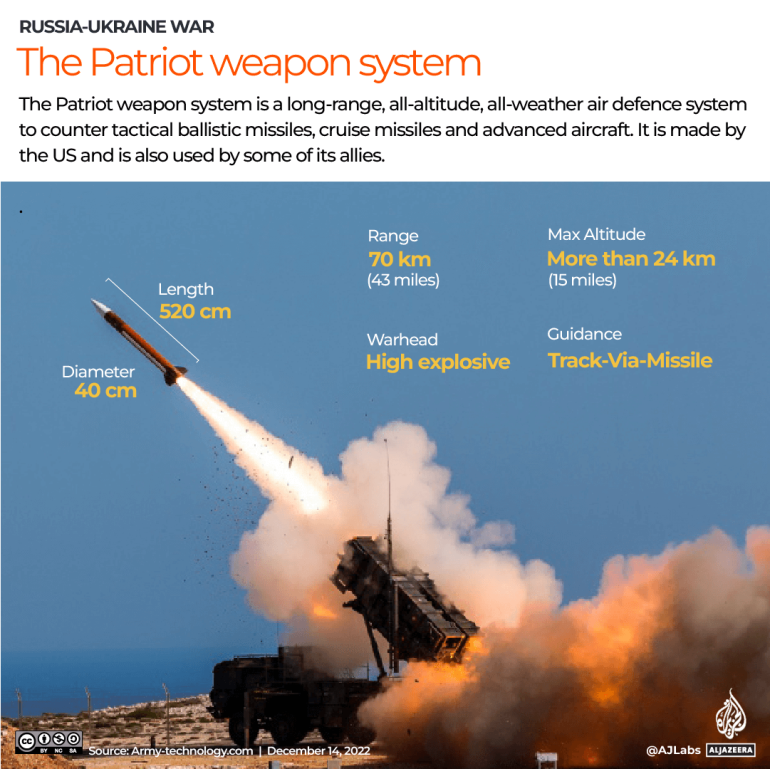Charting the past year of Russian drone and missile attacks on Ukraine
More than 800 drones and missiles were launched at Ukraine on Sunday, the highest since the war began.

By Marium Ali and Hanna Duggal
Published On 9 Sep 20259 Sep 2025
On Sunday, Russia launched its largest drone and missile attack since the war began, firing a total of 823 projectiles into Ukraine.
The attack killed at least four people, wounded 44, and caused damage to a key building in Kyiv’s government district, making it the first on the site since the full-fledged war began in February 2022.
Ukraine’s air force said Russia fired 810 drones and decoys, as well as 13 cruise and ballistic missiles. They added that nine missiles and about 60 drones had made it through their air defences and landed in Ukraine.

The air force said 33 locations were struck across Ukraine, with officials saying that Russian strikes damaged civilian and residential infrastructure in Kyiv, Sumy, Dnipro, and Zaporizhzhia cities; Kremenchuk in Poltava province; Kryvyi Rih in Dnipropetrovsk province; Sloviansk in Donetsk province; and parts of Chernihiv and Cherkasy provinces.
How many drone strikes has Russia launched?
Since the start of the year, Russia has launched at least 37,000 air attacks on Ukraine, according to a tally by the Center for Strategic and International Studies.
According to the Institute for the Study of War (ISW), Russia has intensified drone strikes following Ukraine-Russia bilateral talks in Istanbul, Turkiye, on May 15. The talks, pushed by United States President Donald Trump, did not yield any breakthrough.
Advertisement
Between January and May 2025, Russian drone strikes averaged about 120 strikes per day. From May to August, drone strikes averaged 185 per day.

What types of drones is Russia using?
Russia is mainly using Shahed-type drones in their attacks. At the start of the war, these low-cost weapons were primarily supplied by Iran.
The number of Russian drones has risen significantly, with Moscow scaling up its production of Shahed-type drones, known as Gerans (Russian analogues of the Iranian missiles), Garpiyas (made with Chinese components), and Gerberas (low-cost decoys that mimic Shaheds on radar but carry little or no explosives, intended to deplete Ukraine’s expensive interceptor missiles).
Russia is producing these drones in Tatarstan and has opened a new production line at the Izhevsk Electromechanical Plant, where it already produces Garpiya drones, according to the ISW.

In June 2025, Ukrainian defence intelligence suggested that Russia was capable of producing an average of 170 Shahed-type drones per day (about 5,100 per month) and planned to increase production to 190 drones per day by the end of 2025.
The Russian-made Geran-1 (also known as Shahed 131) and Geran-2 (also known as Shahed 136) are low-cost, with a price range of $20,000-$50,000 for domestic production, but have a high impact.
The Shahed-131 is a smaller munition with a range of 700-900km (435-560 miles), while the larger Shahed-136 has a range of at least 2,000km (1,243 miles). They are known for flying at low altitudes and slow speeds. That means they can be shot down by individual soldiers, but they can also be used against front-line positions and are more manoeuvrable than faster missiles.
Some of Russia’s homegrown drones include the Lancet kamikaze drone, designed for precision strikes, the ZALA family of reconnaissance and attack drones, and several reconnaissance models such as the Orlan-10, Supercam and Merlin-VR.
However, Russia is predominantly relying on Shahed-type drones, and — alongside those — is also using cruise missiles and ballistic missiles.

What type of air defence system has Ukraine used against Russian air attacks?
Ukraine has employed several tactics and weapons to take down or disable drones, including modern air defence systems alongside mobile fire teams and electronic warfare.
Man-portable air defence kits (MANPADS), heavy machineguns and German-made IRIS-T and US-made NASAMS and SHORAD missile defence systems have also been used against drone attacks, intensifying in recent weeks.
Advertisement
Ukraine has had the most success in downing drones with the German radar-assisted Gepard anti-air 35mm gun and domestically-developed interceptor drones, according to Ukrainian drone warfare expert Olena Kryzhanivska.

Ukrainian President Volodymyr Zelenskyy has made domestically produced weapons a top priority, saying in July that within six months, the country’s domestic arms production should aim to reach 50 percent of its needs.
Ukraine has also used the US-made Patriot system against ballistic and cruise missiles, providing a critical layer of defence against long-range attacks, including from some of Russia’s most advanced missiles.

What are the latest developments on the ground?
Currently, Russia controls one-fifth – 114,500sq km (44,600sq miles) – of Ukrainian land, with about 88 percent of the Donbas under its control and three-quarters of Zaporizhia and Kherson oblasts.
For most of this year, the war has settled into a grinding impasse with heavy losses on both sides; however, in August, Russian forces made significant gains, advancing about 10km (6 miles) beyond the front lines.
